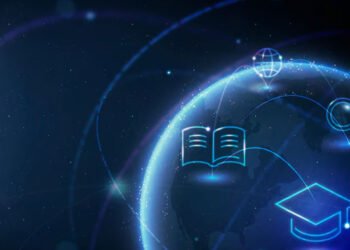Personalized learning has become an innovative solution in modern education, enhancing the way students engage with their studies and perform academically. As schools and colleges strive to offer more tailored educational experiences, they’ve discovered that personalization can dramatically improve student engagement and overall success. This method caters to the unique needs of each learner, creating a more inclusive and effective environment.
From primary school classrooms to college lecture halls, personalized learning has proven to be a powerful tool. It allows students to learn at their own pace, focus on subjects they find challenging, and utilize resources that cater to their preferred learning styles. This shift in approach makes studying not only more manageable but also more enjoyable, leading to higher levels of success in assignments, homework, and exams.
Moreover, with the rise of digital platforms and online resources like EssayPro help, students now have access to custom-tailored assistance that complements personalized learning. These platforms not only offer study guides and essay support but also help students complete their assignments efficiently, allowing them to focus on learning rather than the stress of deadlines.
What Is Personalized Learning?
Personalized learning refers to an educational approach where instruction is tailored to the individual needs, strengths, and interests of each student. Instead of using a one-size-fits-all curriculum, this method takes into account the diversity of learners, offering customized pathways for studying and mastering subjects.
One of the main benefits of personalized learning is that it allows students to take control of their education. Students can work on assignments at their own pace, ensuring they understand a topic fully before moving on. Teachers serve as facilitators, guiding students through the material rather than dictating it.
The Benefits of Personalized Learning for Students
- Enhanced Engagement: When students feel that the material is relevant to their interests, they are more likely to engage deeply with it. Personalized learning ensures that students are studying topics and using resources that resonate with them.
- Improved Performance: Students perform better when they have the chance to learn at their own pace. By allowing students to master one concept before moving to the next, personalized learning reduces the pressure of keeping up with the class, which can result in higher grades on assignments and exams.
- Greater Flexibility: Personalized learning accommodates different learning styles, whether students learn best through visual aids, hands-on activities, or written materials. This flexibility makes the learning process more inclusive and effective.
How Personalized Learning Transforms Classroom Dynamics
Incorporating personalized learning into the classroom can transform not just the way students learn, but also the overall classroom atmosphere. Teachers become facilitators rather than lecturers, focusing on each student’s unique needs and challenges. The classroom becomes a collaborative space, with students working on different tasks based on their individual learning plans.
Adapting Homework and Assignments
Assignments and homework are typically seen as a one-size-fits-all task. However, in a personalized learning environment, these tasks can be modified to better suit the needs of each student. For example, a student who struggles with writing can be assigned shorter, more frequent writing tasks to help build their skills over time. Meanwhile, a student who excels in a particular subject can be given more challenging assignments to keep them engaged.
Personalized assignments also encourage students to think critically and apply their knowledge in real-world situations, rather than merely memorizing facts. This leads to deeper understanding and long-term retention of the material.
Personalized Learning Tools and Techniques
Several tools and techniques can be implemented to enhance personalized learning. These resources are designed to support both teachers and students in creating customized learning experiences.
- Learning Management Systems (LMS): Digital platforms such as Moodle or Google Classroom allow teachers to create individualized study plans and assign tasks tailored to each student’s progress. These platforms also enable students to access resources anytime, making studying more flexible.
- Adaptive Learning Technologies: Tools like AI-driven tutoring platforms assess student progress and adjust the difficulty level of the material. This ensures that students are always working on tasks that are appropriate for their skill level, preventing them from becoming overwhelmed or disengaged.
- Project-Based Learning: Personalized learning often includes project-based assignments, where students can choose topics that interest them. This method enhances engagement and fosters independent learning.
Impact on Student Success
The direct impact of personalized learning on student success is significant. Students who participate in personalized learning environments often report increased confidence in their abilities and a greater sense of achievement. With tailored assignments and homework, students can focus on areas they find difficult, improving their overall academic performance. Additionally, personalized feedback from teachers helps students understand their strengths and weaknesses, enabling them to target their efforts more effectively.
Conclusion
Personalized learning is revolutionizing the educational landscape, offering students the opportunity to take control of their academic journey. By allowing for flexible, student-centered learning environments, this approach has shown to increase engagement, improve performance, and provide a more fulfilling educational experience. As personalized learning continues to grow, students will benefit from more tailored support, including tools like online nursing assignment help, which can make completing assignments easier and more effective.












